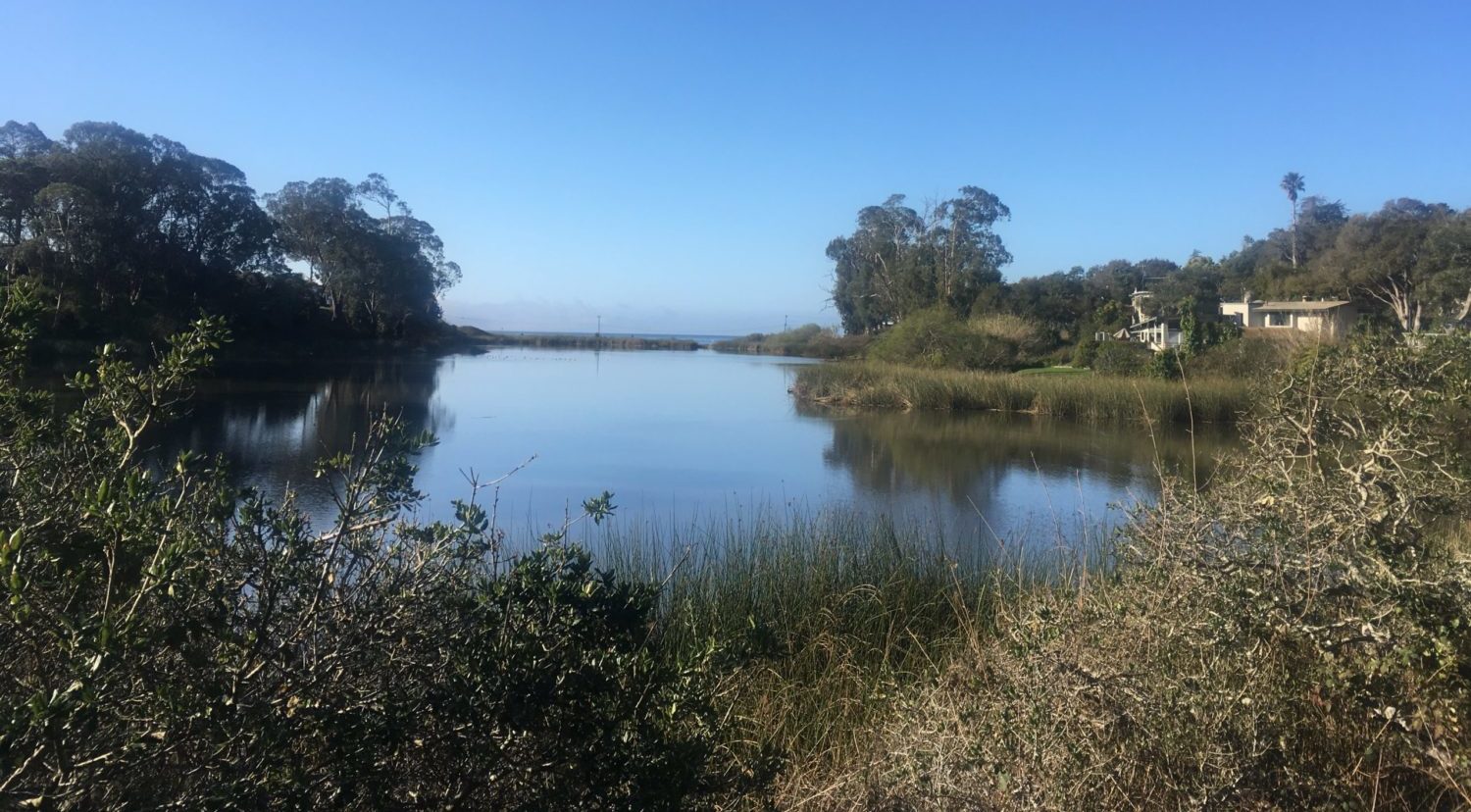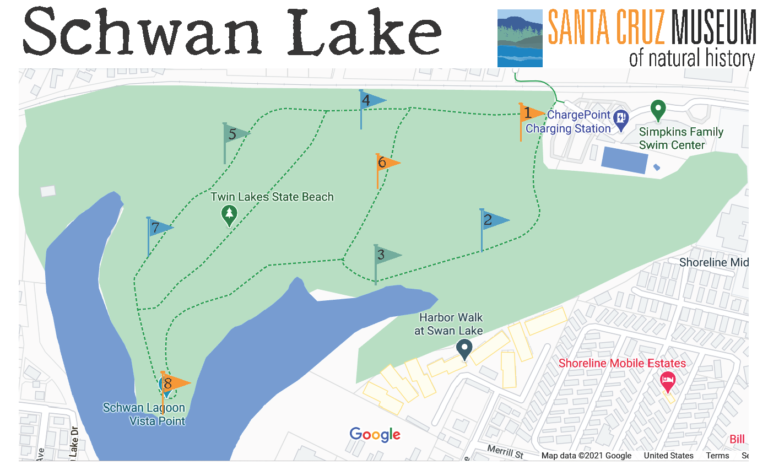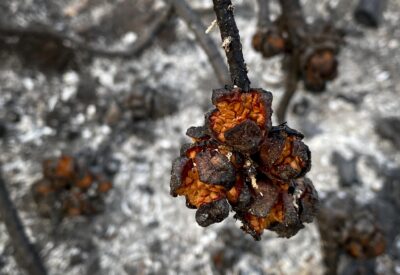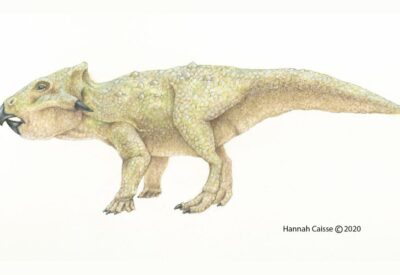
Guide to Schwan Lake Trails
Have you heard of or been to Simpkins Swim Center?
Did you know that the Simpkins Swim Center is the former site of a cement plant that manufactured the cement tetrapods used in the harbor jetty? In the back of their parking lot is access to a short set of trails managed by Twin Lakes State Park. These trails meander through sunny meadows and shady oaks and lead to views of the Pacific Ocean and Schwan Lake.
History of Schwan Lake
Schwan Lake was once a lagoon that connected to the ocean and is named after Jacob Schwan, an immigrant from Germany who owned and farmed on the land in the 1860s. In the 1880s the lagoon had bridges and a railroad trestle crossing over it. After the construction of East Cliff Drive in the 1930s the lagoon was blocked from the ocean. This caused it to seasonally dry up and become very smelly. In 1977 a weir gate was installed so now the lagoon is a lake and never dries up! A weir gate is like a dam but it allows water to flow over the top of it once the lake reaches a certain water level.

Guide to Schwan Lake Trails
As you enter the trail, you view a meadow lined with coast live oak and Monterey pine trees. You can take the trail to the right or left to start. Both eventually lead down near the water.
- What time of year is it? What colors are the plants in the meadow? If you are walking here in fall the meadow might be a bit dry and brown. Take a closer look at the oak trees as you go down the trail and see if you can find any acorns on the tree or below on the ground. If it is spring and the meadow is lush from recent rains, take a closer look at the meadow to see if you can spot any wildflowers. Be careful of poison oak as it grows amongst the trailside plants.
- In the summer the thorny plant lining the trail has delicious berries. Do you already know the name of this plant? Blackberry!
- Do you notice any different plants near the water? How are they different from the plants in the meadow?
- You might spot some oaks here but do you notice a new tree that wasn’t in the meadow? Arroyo willows are found down near the water.
- Look up. Do you see anything moving or hear any sounds? Every once in a while look up to see if you can see a squirrel or bird in the canopy above you.
- If it is winter or has rained recently these trails can get pretty muddy. Do you see any tracks on the trail?
- Take a moment to be quiet, close your eyes and listen. How many different sounds do you hear? What directions are they coming from (in reference to where you are standing)?
- From here you can look out over the lake and even see the ocean! Take a moment here to observe the water. How many different types of birds do you see? What are they doing? Do you see any plants in the water? Tule, a tall reed-like plant grows along the edges of this lake. It is an important nesting spot for the red-winged blackbird.
























